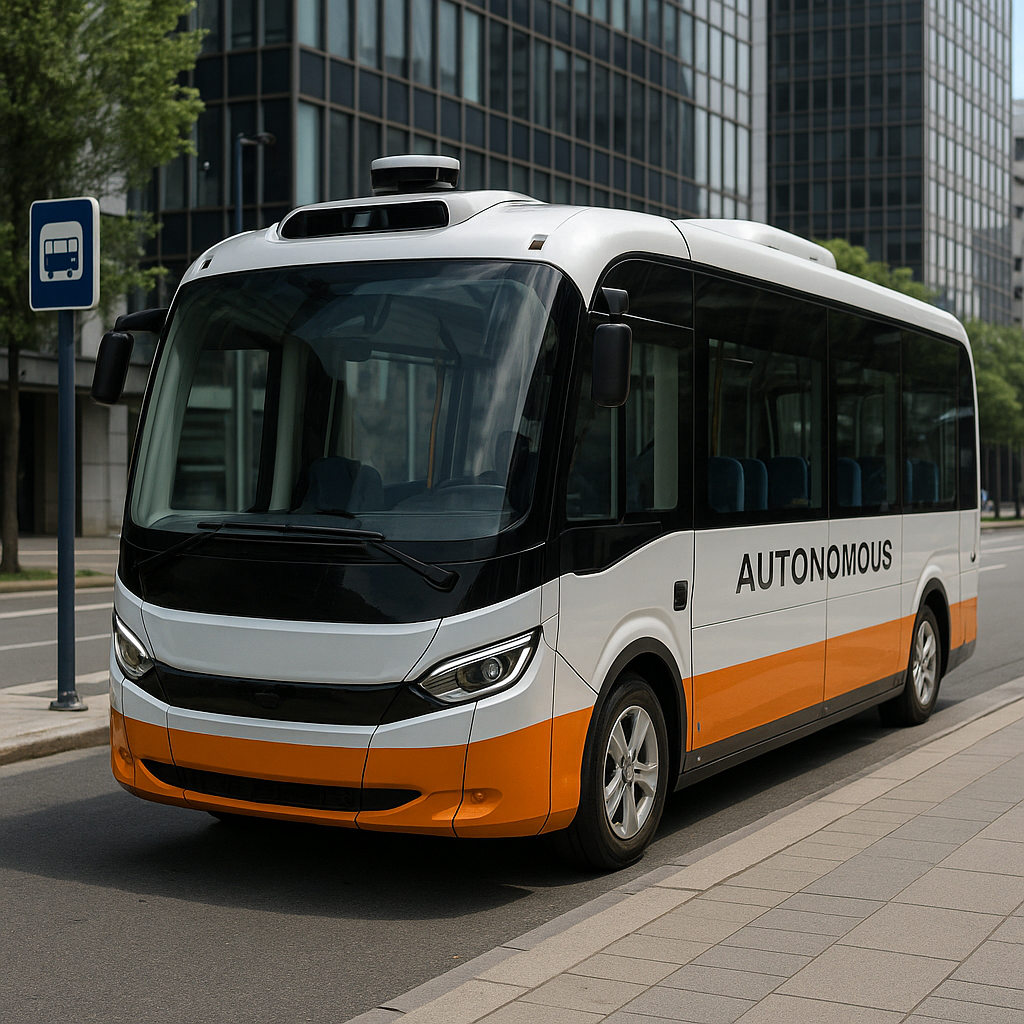How AI and automation are powering the future of public transport
According to the research, autonomous public transport delivers significant advantages. One of the most notable benefits is enhanced safety. Consistent, computer-driven operations reduce human error, which remains the primary cause of most road accidents worldwide. Environmental gains are equally compelling. As many APT systems are built on electric platforms, they contribute zero tailpipe emissions, directly supporting urban sustainability and carbon neutrality goals.

A new study published in the World Electric Vehicle Journal highlights how autonomous public transport (APT) is reshaping global urban transit systems. The research, titled “Autonomous Public Transport: Evolution, Benefits, and Challenges in the Future of Urban Mobility,” offers an in-depth exploration of the rapid evolution of self-driving buses and shuttles, their environmental and operational benefits, and the technological, social, and regulatory hurdles slowing their widespread adoption.
The study asserts that by leveraging cutting-edge technologies and inclusive governance, autonomous public transport can evolve from pilot projects into a scalable, reliable backbone of modern mobility systems.
Tracing the evolution and benefits of autonomous public transport
The study provides a historical view of how autonomous public transport evolved from early radio-guided prototypes in the 1920s to sophisticated urban pilots that are redefining public mobility today. From RCA’s guided vehicle experiments in the mid-20th century to the 1980s vision-based Mercedes-Benz tests and the first automated shuttles in Europe during the late 1990s, each milestone has contributed to the robust frameworks shaping current APT systems. The introduction of SAE automation levels further standardized progress, guiding the safe and structured development of autonomous platforms.
According to the research, autonomous public transport delivers significant advantages. One of the most notable benefits is enhanced safety. Consistent, computer-driven operations reduce human error, which remains the primary cause of most road accidents worldwide. Environmental gains are equally compelling. As many APT systems are built on electric platforms, they contribute zero tailpipe emissions, directly supporting urban sustainability and carbon neutrality goals.
Cost efficiency also stands out. Removing the need for human drivers in select services significantly reduces operational expenses, which can translate into lower fares and increased accessibility. When combined with intelligent scheduling and route optimization, cities deploying APT can reduce traffic congestion and improve service reliability.
Overcoming challenges: Safety, cybersecurity, and social equity
APT faces critical challenges that must be addressed for successful integration into mainstream transit systems. One pressing issue is safety in the absence of human operators. Surveys cited in the research reveal that over 68 percent of respondents believe handling emergencies is more complex when no driver is present. To mitigate this risk, many pilot projects worldwide employ attendants or rely on teleoperation technologies to monitor vehicle performance and handle unforeseen situations.
Cybersecurity emerges as another significant concern. As autonomous shuttles and buses rely on interconnected networks for navigation and communication, they become potential targets for cyberattacks. The study stresses the importance of robust encryption protocols, intrusion detection systems, and real-time threat monitoring to safeguard critical data and ensure passenger safety.
The socioeconomic implications of APT adoption are also substantial. The displacement of traditional driving roles poses challenges for labor markets, making workforce transition programs and reskilling initiatives essential. Moreover, the authors highlight the risk of inequitable access if planning does not prioritize inclusivity. Autonomous services could inadvertently widen gaps in mobility for underserved communities if strategies do not focus on equitable distribution and affordability.
Environmental modeling further amplifies the urgency of inclusive planning. The research indicates that a single autonomous vehicle could replace up to eleven conventional vehicles, significantly reducing traffic and emissions. However, the full benefits materialize only when APT systems complement existing public transit rather than competing with it. Without careful integration, autonomous services risk increasing congestion and emissions by encouraging individual trips in shared automated vehicles instead of collective ridership.
Global case studies and the path forward
In Singapore, an innovative model integrates autonomous vehicles on-demand for low-demand routes while maintaining frequent service on primary corridors. This approach ensures that high-capacity routes remain efficient while providing flexible solutions for underserved areas, achieving greater network coverage and operational cost savings.
In Switzerland, the deployment of autonomous shuttles in Fribourg demonstrates the potential of fixed-route operations to connect innovation hubs with urban centers. High-frequency service during peak hours enhances efficiency, while future plans to transition into on-demand operations reflect the adaptability of APT systems to evolving passenger needs.
The San Francisco case highlights the importance of regulatory alignment in deploying autonomous services. On Treasure Island, a fully electric autonomous shuttle operates along a fixed loop, offering valuable data on performance, safety, and rider experience. Similarly, Detroit’s “Connect” project in Michigan showcases a collaborative approach to integrating APT into existing infrastructure, including wheelchair accessibility and real-time passenger information to improve user experience and inclusivity.
According to the study, advanced technologies like artificial intelligence and machine learning are key to improving vehicle perception and decision-making capabilities. Sensor fusion, combining LiDAR, radar, and high-definition cameras, enhances operational reliability in complex traffic environments. High-speed connectivity through 5G and vehicle-to-everything (V2X) communication enables real-time traffic data exchange, improving efficiency and safety across networks.
The research also notes that policy and governance frameworks will play a pivotal role in shaping the future of autonomous transit. Clear legal and liability structures, robust data privacy regulations, and internationally harmonized standards are essential for scaling these systems safely and effectively. Strategic public engagement campaigns and pilot programs that build trust among users are equally critical for fostering social acceptance.
- FIRST PUBLISHED IN:
- Devdiscourse










